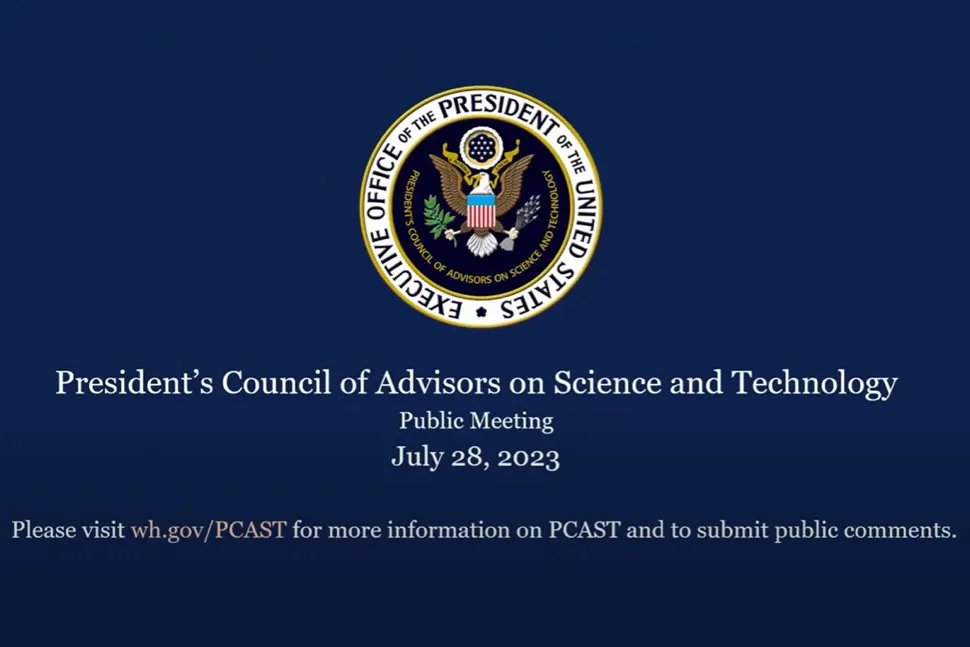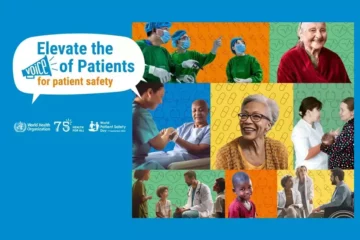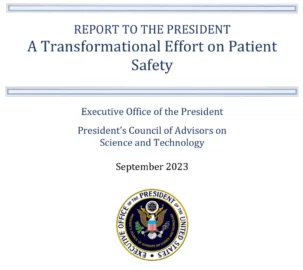The President’s Council of Advisors on Science and Technology (PCAST) consists of distinguished individuals from sectors outside of the Federal Government who advise the President on policy matters where the understanding of science, technology, and innovation is key. Patient safety is an urgent national public health issue. Following are 4 major recommendations that are offered to the President by PCAST working group for consideration.
Recommendation 1
Establish and Maintain Federal Leadership For the Improvement of Patient Safety as a National Priority The President should bring immediate attention to the urgent need to improve patient safety and healthcare workforce safety as a national priority, by establishing a White House-led Transformational Effort on Patient Safety that commits to helping solve the critical challenges in the public and private sectors, and direct the Department of Health and Human Services (HHS) Secretary to oversee coordination across HHS agencies including accountability for progress, with public reporting to the President at least annually.
1A: Appoint a Patient Safety Coordinator Reporting to the President on Efforts to Transform Patient Safety Among All Relevant Government Agencies.
1B: Establish a Multidisciplinary National Patient Safety Team (NPST) and Ensure Inclusion of Persons from Populations Most Affected.
Recommendation 2
Ensure All Patients Receive Evidence-Based Solution for Preventing Harm and Addressing Risks The President should direct the HHS Secretary, in collaboration with the Department of Defense (DoD), and Department of Veterans Affairs (VA), to require the appropriate federal agencies to develop a list of high-priority harms, evidence-based practices, and system-level mitigation strategies to eliminate harms. As many measures as possible should be generated from real-time automated electronic health data.
2A: Identify and Address High-Priority Harms and Promote Patient Safety Though Incentivizing the Adoption of Evidence-Based Solutions and Requiring Annual Public Reporting Immediately and Quarterly Public Reporting Within 5 Years.
2B: Create a Learning Ecosystem and Shared Accountability System to Ensure That Evidence Based Practices are Implemented and Goals for Reduced Harms and Risks of Harm for All Americans are Realized.
2C: Advance Interoperability of Healthcare Data and Assure Free Access to the Tracking of Harms and Use of Evidence-Based Solutions.
2D: Improve Safety for All Healthcare Workers and Their Patients Through Supporting a Culture of Patient and Clinician Safety in Healthcare Systems.
Recommendation 3
Partner with Patients and Reduce Disparities and Adverse Outcomes It is crucial to engage diverse stakeholders in the nation’s efforts to reduce harm from unsafe care. This should include partnering and collaborating with patients, families, and communities most impacted by unsafe care. Implementing evidence-based solutions in healthcare settings should include patient-centered approaches and give special attention to longstanding disparities. To address disparities in patient safety, the President should direct the following activities:
3A: Implement “Whole of Society Approach” in the Transformational Effort on Patient Safety.
3B: Improve Data and Transparency to Reduce Disparities.
Recommendation 4
Accelerate Research and Deployment of Practices, Technologies, and Exemplar Systems of Safe Care Beyond today’s knowledge, it is critically important to accelerate the development and deployment of new technologies, processes, and evidentiary foundations for safe healthcare, so that errors and injuries are minimized. Promising directions include harnessing new practices and technologies for assisting with medication selection and management, improving accuracy of diagnosis, shortening time to diagnosis, monitoring, as well as predictions about treatment effectiveness based on individual characteristics.
4A: Develop a National Patient Safety Research Agenda.
4B: Harness Revolutionary Advances in Information Technologies.
4C: Develop Federal Healthcare Delivery Systems’ Capacities and Showcase Results as Exemplars for Safer Healthcare.





